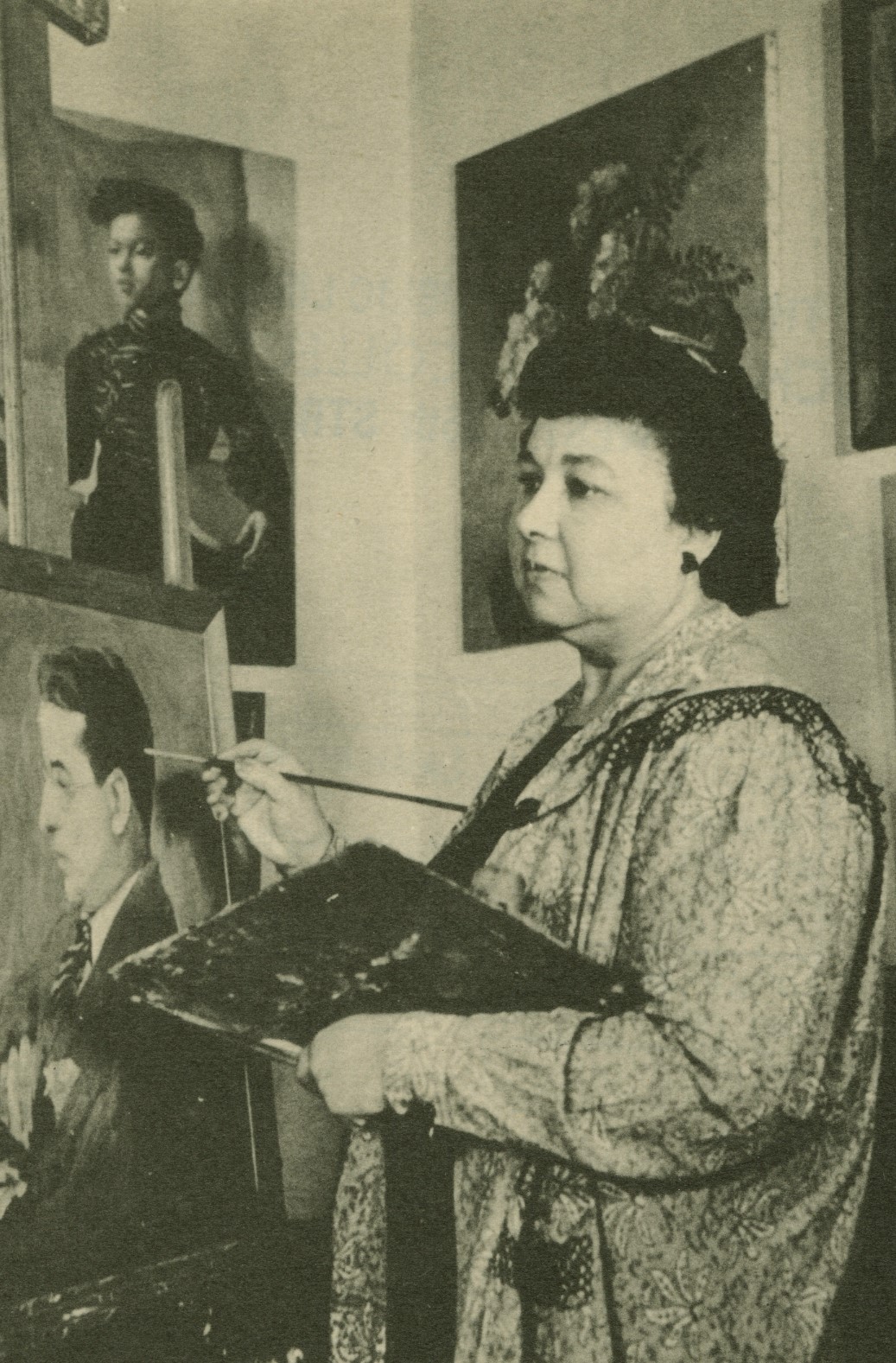More about Laura Wheeler Waring
Works by Laura Wheeler Waring

Sr. Contributor
Laura Wheeler Waring came from a long line of teachers.
During a time when most women did not attend secondary school, Waring surpassed expectations set by both her gender and her race by graduating from high school and college. She attended the prestigious Pennsylvania Academy of Fine Arts, which boasts famous graduates such as Thomas Eakins and Henry Ossawa Tanner. When she graduated, she belonged to the sixth generation of college graduates in her family, no small feat for a Black family in the nineteenth and twentieth centuries in the United States. It’s no wonder that education became such a central part of Waring’s life.
After PAFA, Waring continued to pursue her artistic education. She won a travel scholarship and traveled to Paris to study art. She was particularly inspired by the works of Claude Monet, whose influence you can see in the Impressionist-like brushstrokes in Waring’s paintings.
As Waring continued to cultivate her own artistic talents, she never strayed far from her passion for education. While working at Cheyney University in Pennsylvania, she embedded her love for art and music into the school’s curriculum. Although she first won acclaim for her landscape paintings, she became even more well-known for her portraits. In 1928, the Harmon Foundation featured Waring in the first exhibition to show works by African-American artists only. Despite this milestone, not everyone got on board with what The Harmon Foundation was doing. The Foundation’s earlier efforts, especially the use of white juries to judge Black artists’ work, seemed half-baked and steeped in white supremacy. Romare Bearden openly condemned the Foundation’s insufficient support of the Black art it was purportedly trying to promote.
Two decades later, The Harmon Foundation chose eight of Waring’s portraits for the traveling exhibition Portraits of Outstanding Americans of Negro Origins. Her entries included paintings of W.E.B. DuBois, Marian Anderson, and James Weldon Johnson. The exhibition traveled around the United States for ten years until 1954, when the Supreme Court abolished legal segregation. Although we now know that systemic racism is still embedded in every aspect of American life and that many people continue to hold on to racist attitudes, this ruling led the Harmon Foundation to conclude that racism was "officially over." Despite DuBois’ undeniable importance, the Harmon Foundation removed his portrait from the exhibition in 1953. Although the Foundation claimed the move was because wanted to make room for newer portraits, many contemporaries suspected that DuBois’ association with the Communist Party was the real reason for the removal.
Alongside her artistic accomplishments, Waring simultaneously continued to teach at Cheyney University, where she worked for nearly forty years. In keeping with the educational theme of her life, she married Walter E. Waring, who was a professor at Lincoln University. They wed in 1927 and lived and worked together until her death in 1948.
Sources
- Connecticut Women’s Hall of Fame. “Laura Wheeler Waring.” Inductees. https://www.cwhf.org/inductees/laura-wheeler-waring. Accessed 25 January 2021.
- Evenhaugen, Anne. “African American art and the Harmon Foundation.” Unbound. Smithsonian Library and Archives. 22 February 2013. https://blog.library.si.edu/blog/2013/02/22/african-american-art-and-th…. Accessed 25 January
- Frank, Priscilla. “Museums Celebrate the Black Women Artists History has Overlooked.” Huffpost. 24 February 2017. https://www.huffpost.com/entry/black-women-artists-museums_n_58a499b2e4…. Accessed 25 January 2021.
- Harris, Valerie. “Life of a Portrait: Laura Wheeler Waring’s Anna Washington Derry.” Summer 2019. http://paheritage.wpengine.com/article/life-portrait-laura-wheeler-wari…. Accessed 25 January 2021.
- Mennenga, Lacinda. “Laura Wheeler Waring (1887-1948).” Black Past. African American History. 30 May 2008. https://www.blackpast.org/african-american-history/waring-laura-wheeler…. Accessed 25 January 2021.
- Patterson, Vanessa Leanne. “Cheyney University of Pennsylvania.” Black Past. African American History. 6 July 2010. https://www.blackpast.org/african-american-history/cheyney-university-p…. Accessed 25 January 2021.
- Smithsonian Institution. “Breaking Racial Barriers: African Americans in the Harmon Foundation Collection.” National Portrait Gallery. Exhibitions. https://npg.si.edu/exh/harmon/. Accessed 25 January 2021.
- The Editors of Encyclopedia Britannica. “Laura Wheeler Waring.” Britannica. Biography. https://www.britannica.com/biography/Laura-Wheeler-Waring. Accessed 25 January 2021.
Featured Content
Here is what Wikipedia says about Laura Wheeler Waring
Laura Wheeler Waring (May 26, 1887 – February 3, 1948) was an American artist and educator, most renowned for her realistic portraits, landscapes, still-life, and well-known African American portraitures she made during the Harlem Renaissance. She was one of the few African American artists in France, a turning point of her career and profession where she attained widespread attention, exhibited in Paris, won awards, and spent the next 30 years teaching art at Cheyney University in Pennsylvania.
Check out the full Wikipedia article about Laura Wheeler Waring











